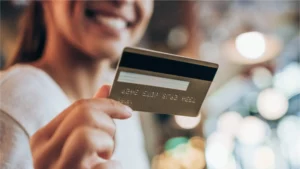
The most surefire way to get out of debt is to create a detailed budget, prioritize paying off debts with the highest interest rates first while making minimum payments on others, and consistently allocate extra funds toward debt repayment until all balances are cleared. Additionally, consider seeking professional financial advice to explore options like debt consolidation or settlement if necessary.
In the fourth quarter of 2023, the amount of household debt in the United States increased to $17.5 trillion. Although credit cards, mortgages, and loans have several benefits, some consumers have trouble repaying what they borrowed. If you’ve been struggling to get your finances on track, learn how to get out of debt by creating a budget, earning extra money, and adjusting your spending habits.
1. Identify Your “Why”
Everyone needs a little motivation from time to time. Before you start your debt-free journey, it’s important to identify your “why,” or your main reason for getting out of debt. Here are a few ideas to get you started:
- You don’t want the stress of making minimum payments every month.
- You’re tired of being behind on your bills.
- You’d rather put extra money in your savings account than spend it on debt payments.
- You want to create a strong financial future for your family.
- You need to set aside funds to care for a child with special needs.
- You’re tired of arguing with your spouse or partner about money.
- You don’t want your kids to have to take out thousands of dollars in loans to pay for college.
- You want to travel around the world while you’re healthy enough to enjoy it.
2. Assess Your Current Situation
Before you start making extra payments, review your bank and credit card statements to determine how much you’ve been spending each month. Be sure to include every expense, no matter how small, from snacks to streaming subscriptions.
Once you have a handle on your expenses, make a list of credit cards, loans, and other debts. For each debt, note the creditor’s name, the balance due, and the minimum monthly payment. At the bottom of the page, add up your balances to determine the total amount of debt you have.
3. Review Your Spending Habits
Next, look at the list of expenses from the previous step. Ask yourself these questions:
- Are there any duplicate expenses, such as two charges for the same subscription?
- Can you eliminate any of the items on your list?
- Are you spending more than you earn each month?
The answers to these questions will help you determine how to get out of debt faster. For example, if you’re spending more than you earn each month, your priority should be to increase your income or reduce your expenses to eliminate the shortfall.
As you review your expenses, see if you can identify any spending triggers, which are things that cause you to spend money impulsively. Limited-time discounts, negative emotions, envy, and boredom are examples of triggers that may lead to increased spending.
Once you identify your triggers, work to eliminate them. For example, if you notice you buy something every time you receive a weekly email from your favorite retailer, consider unsubscribing from the retailer’s email list.
4. Make a Budget
If you think budgeting is only for people with lower incomes, think again. Having a budget makes it easier to get your finances on track, regardless of whether you earn $40,000 or $400,000 per year. To create a personal budget, follow these steps:
- Calculate your net income from all sources. Your net income is the amount of money remaining after taxes, health insurance premiums, and other deductions are taken from your paycheck.
- Add up your monthly expenses.
- Subtract your expenses from your net income. If the result is positive, you have some money left over each month. A negative result indicates you’re spending more than you earn.
Here’s an example to help you understand the process:
- Cassandra nets $2,247 per month from her full-time job and $325 per month from her side hustle. Her net income is $2,572.
- Cassandra shares a two-bedroom apartment with a friend from college, so she pays just $750 per month in rent. She also spends $350 per month on groceries, $218 per month on student loan payments, $150 per month on utilities, $175 per month on public transportation, and $829 per month on clothing, toiletries, entertainment, and other personal expenses. Her expenses add up to $2,472 per month.
- After subtracting $2,472 in expenses from $2,572 in net income, Cassandra has $100 left over.
If you have trouble keeping track of your income and expenses, use this monthly budgeting sheet.
5. Find Ways to Increase Your Income
Slashing your expenses is a great start, but if you have a significant amount of debt, you’ll also want to increase your income. The more income you have, the easier it is to pay off debt quickly.
To maximize your earning potential, do at least one of the following:
- Apply for a part-time job.
- Start a service-based business in your neighborhood.
- Sell clothing, accessories, and household items via online marketplaces.
- Deliver for DoorDash, Instacart, Grubhub, or Uber Eats.
- Become a driver for Uber or Lyft.
If you start your own business or work as an independent contractor, you’ll have to pay self-employment taxes on your net income. To avoid having a large tax bill on April 15, it’s wise to make estimated quarterly payments.
6. Focus on One Thing at a Time
You have a finite amount of resources, so rather than trying to tackle multiple goals at one time, pick a goal and stick with it. For example, if you have three credit cards, focus on paying one of them in full. You can worry about the other credit cards later.
7. Set Short-Term and Long-Term Goals
Learning how to get out of debt doesn’t happen overnight. If you have multiple accounts, it may take several years to pay them all in full. It’s easy to get discouraged if you have to wait years to celebrate an accomplishment.
To stay motivated, choose a mix of short-term and long-term goals. If your long-term goal is to pay off your credit card debt, a good short-term goal might be to pay off one credit card with a $500 balance. Paying off a small debt gives you a sense of accomplishment, helping you stay motivated.
8. Choose a Debt Payoff Method
Once you have your goals in mind, you need to choose a debt payoff method. You can use the debt snowball or the debt avalanche:
- Debt snowball: With the snowball method, you pay off your debts in order of smallest balance to largest balance. For example, if you have debts of $500, $750, and $1,000, you’d pay them off in that order. Each time you pay off a debt, you free up more money to tackle the other accounts.
- Debt avalanche: To use the debt avalanche method, list your debts according to their interest rates, with the highest rates at the top of the list and the lowest rates at the bottom. For example, if you have a $3,000 loan with an interest rate of 19% and a $1,500 credit card balance with an interest rate of 28%, you’d pay off the credit card debt first, even though the loan balance is higher.
The snowball method gives you a psychological boost every time you pay a balance in full, so some people find it easier to follow than the avalanche method. However, you may end up paying more in interest if you don’t pay off high-interest balances quickly.
With the debt avalanche method, the opposite is true. You pay less in interest, but it also takes longer to pay off each account, which may leave you struggling to stay motivated.
9. Set Up Automatic Payments
Make things easy on yourself by setting up automatic payments for the minimum balance on each debt. If you have extra money, you can always make a second payment later in the month. Automatic payments eliminate the need to remember your due date, reducing the risk of late or missed payments, which can have a drastic impact on your credit.
10. Apply for a Balance Transfer Credit Card With 0% Interest
If you have a good credit score, consider applying for a balance transfer card with a 0% APR. The promotional APR lasts for a limited amount of time, but it could help you pay off high-interest debt much faster.
For example, if you have a $1,000 balance on a high-interest credit card, you can move it to a balance-transfer card with 0% interest for 12 months. Just make sure you pay off the balance transfer before the promotional period expires.
If you don’t have the credit needed to qualify for a balance transfer card, sign up for credit monitoring to help you determine when your credit has improved enough to apply for a new account.
You can learn more about managing debt and other financial topics at Credit.com.

